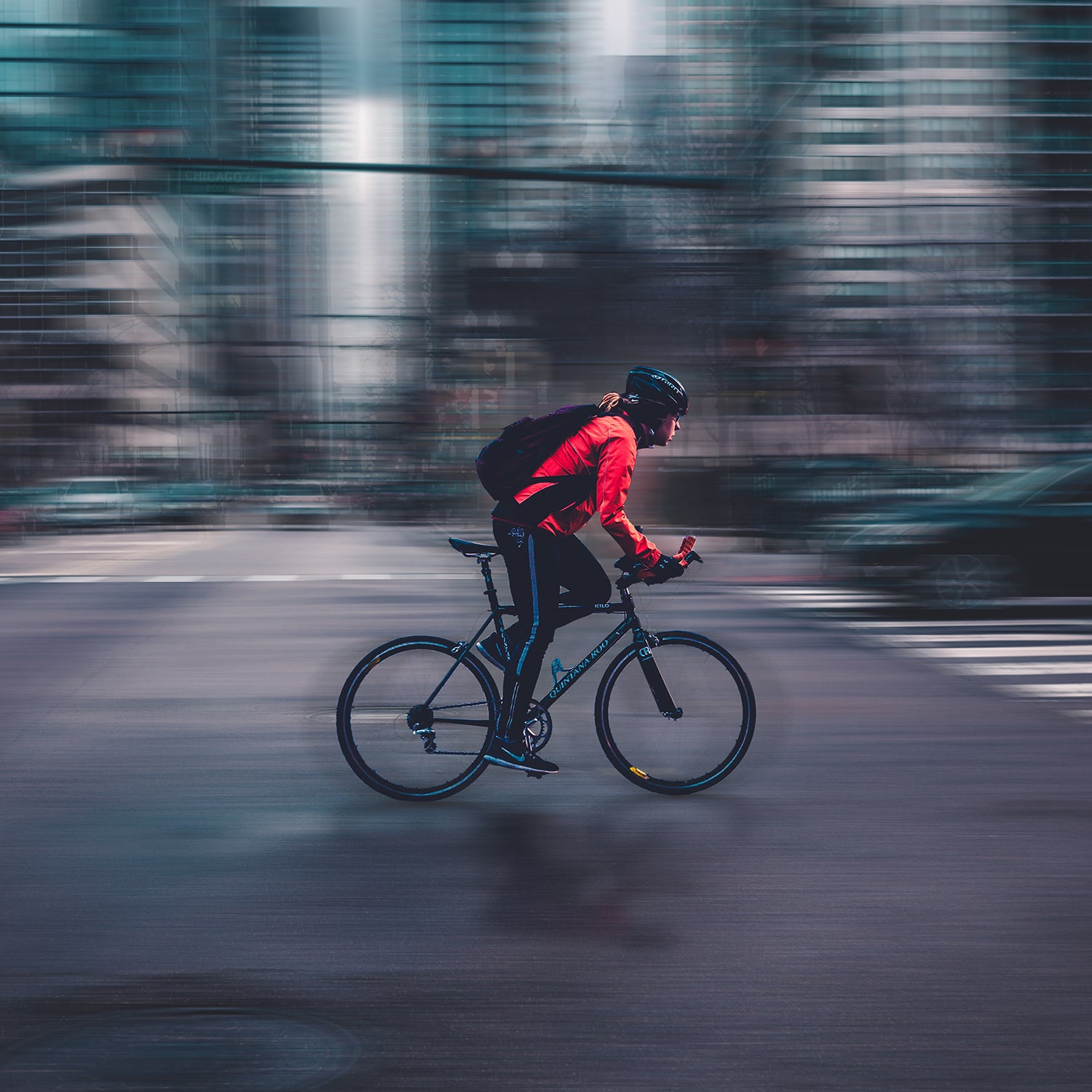Think about an objectively dangerous place on your favorite road ride: a blind corner, a lane shaded by overhanging trees, a tunnel, or an east–west straightaway at sunrise or sunset. Always vulnerable on the road, cyclists are especially at risk of getting hit by cars in such hazardous spots. But what if your bike could wirelessly transmit its position to a well-placed sign with flashing signals that would in turn alert motorists to the danger—or even directly to a pedestrian warning light within the vehicle? The risks would diminish, and accidents would likely decrease.
That might sound far-fetched, but last week, at the Places for Bikes conference in Indianapolis, Tome Software, Trek Bikes, and Ford Motor Company announced the formation of an advisory board to develop just such artificial intelligence–driven bicycle-to-vehicle (B2V) communications systems aimed at keeping cyclists safer. It’s a timely endeavor, with more cars than plying U.S. roads and accidents from distracted driving on the . “We want to be the bridge between the automotive and the bicycle industries,” says Tome Software CEO Jake Sigal, who is at the center of the initiative. “The technologies and infrastructure of the so-called smart cities of our future are already in development. The opportunity is to make these technologies work together to make roads safer for cycling.”
The automotive industry already has vehicle-to-vehicle (V2V) standards, with a dedicated short-range communications (DSRC) protocol in place that allows equipped cars to communicate with each other. Mercedes E-Class sedans and several Cadillacs (CTS, XTS, ATS) have adopted the technology, and Toyota and GM plan to roll out equipped models in coming years. Adoption of DSRC has been slow, however, as over standards and how soon to embrace a technology that will only get its utility from mass adoption. The current administration from enforcing mandates for the standard.
Meanwhile, Ford is working with Qualcomm on an even broader system called cellular vehicle-to-everything (), which will allow networking between vehicles and signs, traffic signals, toll booths, and other infrastructure.
Many cyclists are already equipped with the technology to enable their bikes to tap into this communication network. Cycling computers, such as those by Garmin, transmit data wirelessly via Bluetooth and ANT+, and cellphones have built-in GPS locators and Bluetooth connectivity. Tome and the B2V advisory board are almost ready to roll out test projects that leverage these technologies to get bikes communicating with motorists on the road. “We are only months away from our first pilot program,” Sigal says.
Dubbed Mr. Blinky Sign (yes, really), the initial project will use signs with sensors to detect cyclists in dangerous spots and alert drivers to their presence with flashing lights. While Mr. Blinky Sign will make use of ANT+ and Bluetooth communications, Tome is also developing low-cost cameras that will detect cyclists, which will ensure that the system isn’t limited to riders with expensive cycling computers. As the technologies advance and become more widespread, the software can be updated to communicate directly to vehicles equipped with tech to receive cyclists’ whereabouts. In the meantime, the board is starting tests on Mr. Blinky Sign. Sigal says it’s too early to know when the technology will be commercially available, as the pilot tests in the next year will dictate development and production. But all this speculative technology means it could be some time before cyclists benefit from all this technology—just ask Tesla Model 3 purchasers about that.
There have been similar technology efforts in the past, most notably a collaboration between Volvo and POC to build a helmet that could communicate with the Swedish manufacturer’s vehicles. Garmin also has a radar system that communicates the positions of vehicles onto the screen of its bike computers. So one of the biggest obstacles to B2V communications will be achieving protocols and standards. After all, the bike industry is still wrangling over hub widths and disc-mount configurations, and the automotive industry hasn’t yet settled on vehicle-to-vehicle communications standards. Getting all the players on board despite proprietary interests is an inevitable challenge. “We have to create something universal,” Sigal explains. “If you put a beacon on a bike, and the only vehicle on the road that can see it is a Ford Fusion, who is going to buy it?”
Since the announcement of the B2V initiative, more than ten major bike industry companies, including Giant, Specialized, Shimano, and SRAM, have joined the B2V program. Subaru has come on board, too, and Trek says it expects to announce the addition of several more automotive partners soon. “This isn’t about Trek or Ford or any company. It’s about making cycling safer,” says Trek spokesperson Eric Bjorling. “The automotive industry has a track record of collaboration and setting industry-wide standards. And when we took this to the [the Bicycle Product Suppliers Association, the trade group for the U.S. bike industry] and the last month, there was resounding support for working together to solve this problem.”
Trek has a track record of devoting resources to rider safety. “Part of what we do is address the barriers people have to riding their bike,” says John Burke, president of Trek. “Whether it’s infrastructure projects we support, education we provide, or technologies that we develop, we are committed to ensuring that everybody feels great about riding their bike.” In support of rider safety, the company has sponsored at Clemson University’s Perceptual Research department into how cyclists interact in the environment, championed daytime running lights and other products to improve rider visibility, and funded the new People for Bikes City Ratings program. “What we have come to realize is that we can only do so much to get a distracted drivers’ attention,” says Scott Kasin, who manages Trek’s electronic products and integration division. “Bike-to-vehicle communication is the next step in making cyclists safer.”
B2V echoes a broader conversation about the future of transportation and urban settings. Despite recent setbacks, self-driving cars are likely inevitable in the long run for their increased efficiency and improved safety—smart sensors will speed traffic, help prevent accidents, and facilitate finding parking; GPS-linked bike-share systems will make locating and getting around on bicycles easier; and fleets of electric vehicles and long-haul truck platoons that link semis together will improve fuel efficiency and pollution. For a vision of what it will look like, check out , which in 2016 received a $40 million Department of Transportation grant to envision how it could capitalize on growing overlaps in transportation and technology.
“In the City of Tomorrow, a mobility system will see all modes of transportation speaking a common language and working together,” says Jim Holland, vice president of vehicle components and systems engineering at Ford. According to Bjorling, the speed of transportation development and crystallizing plans for the future were part of what motivated Trek to get involved. “The automotive world has a vision of what cities of the future will look like,” he said. “We have to make sure bicycles have a seat at that table.”
That vision of collectivity is precisely what inspires and drives Tome CEO Jake Sigal. He has worked in transportation software his whole life, including creating a startup that was acquired by Ford, and he’s also a lifetime cyclist. “When my wife challenged me to take my knowledge and apply it to health and wellness, I realized that my experience on both sides of this equation, automotive and cycling, put me in a unique position to help facilitate something new,” Sigal says. “It’s easy to get caught up in the all the technology. But at the end of the day, it’s pretty simple: Everyone involved is trying to make the roads safer for cycling.”


